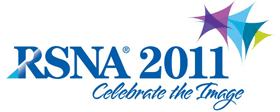
Abstract Archives of the RSNA, 2011
Jean M. Weigert MD, Presenter: Speakers Bureau, Dilon Technologies LLC
Speakers Bureau, Devicor Medical Products, Inc
Speakers Bureau, General Electric Company
Margaret L. Bertrand MD, Abstract Co-Author: Nothing to Disclose
Leora Lanzkowsky MD, Abstract Co-Author: Nothing to Disclose
Lillian H Stern MD, Abstract Co-Author: Nothing to Disclose
The purpose of this study is to compare Breast-Specific Gamma Imaging (BSGI) to mammography (MMG) and ultrasound (US) in patients who require diagnostic imaging due to clinical or radiographic findings.
Four institutions maintained a clinical registry of patients routinely scheduled for BSGI. The radiologist or referring physician preformed all imaging studies and biopsy as deemed clinically necessary. BSGI was conducted with a high-resolution gamma camera (Dilon 6800) and an intravenous injection of 15-25 mCi of 99m-Tc Sestamibi. A minimum of 2 views were acquired for each breast (CC and MLO). All studies were assigned a BIRADS rating and BSGI was rated on a parallel scale established by the Society of Nuclear Medicine Guideline for Breast Scintigraphy with Breast-Specific Gamma Cameras 1.0. Interpreting radiologists had access to all prior studies at the time of each interpretation. Imaging results were classified as positive (IV and V), negative (I - III) or indeterminate (0). Biopsy, or a minimum of 6 months of follow up imaging if biopsy was not conducted, was used as the gold standard. Biopsy results were classified as positive (malignant or high-risk lesions requiring surgical excision) or negative (benign, no additional intervention required).
329 patients underwent MMG, US and BSGI as part of their diagnostic work up. Pathology or follow up imaging was positive in 133 lesions and negative in 196. MMG was positive in 139 lesions: 96 malignant, 2 high-risk and 41 benign and negative in 190: 155 benign, 27 malignant and 8 high-risk. US was positive in 186: 116 malignant, 6 high-risk and 74 benign and negative in 143: 122 benign, 4 high-risk and 31 malignant. BSGI was positive in 182: 114 malignant, 9 high-risk and 59 benign and negative in 147: 137 benign, 1 high-risk and 9 malignant. The sensitivity for MMG, US and BSGI was 78%, 84% and 92% respectively while the specificity was 79%, 61% and 67% respectively.
BSGI has greater sensitivity and comparable specificity compared to ultrasound and mammography and is a valuable adjunctive procedure when these anatomical imaging modalities fail to provide a confident diagnosis.
BSGI is a useful diagnostic modality to augment mammography in the management of patients with difficult to diagnose breast tissue and in cases where unresolved clinical concern remains after mammogra
Weigert, J,
Bertrand, M,
Lanzkowsky, L,
Stern, L,
Molecular Breast Imaging: A Comparison of Breast-specific Gamma Imaging (BSGI)—Mammography and Ultrasound in the Diagnostic Patient . Radiological Society of North America 2011 Scientific Assembly and Annual Meeting, November 26 - December 2, 2011 ,Chicago IL.
http://archive.rsna.org/2011/11004834.html

